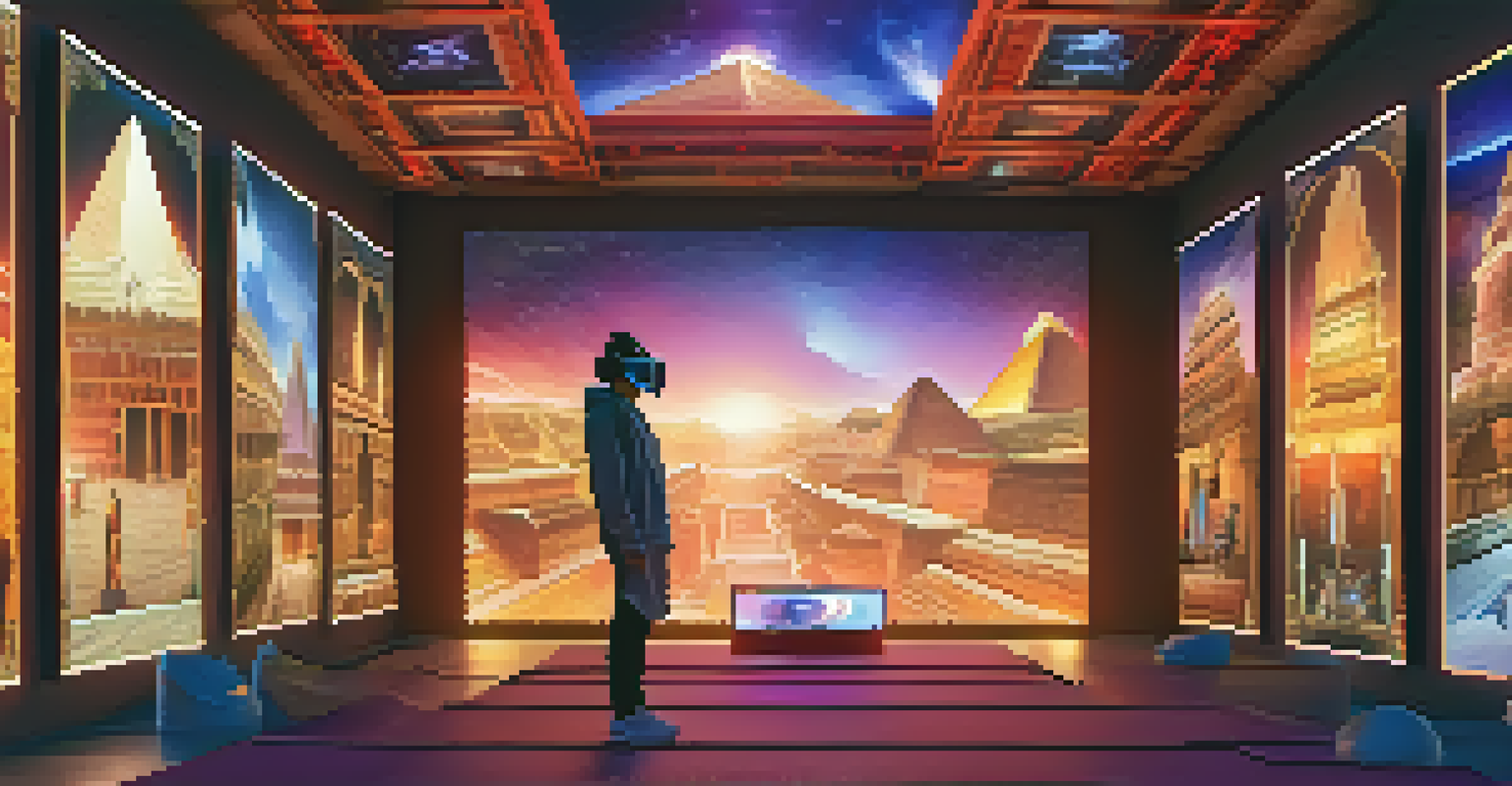Virtual Reality Tours: Previewing Destinations Before Travel

What Are Virtual Reality Tours and How Do They Work?
Virtual reality tours are immersive experiences that allow you to explore destinations from the comfort of your home. By using VR headsets or even just your smartphone, you can be transported to a different place, walking through landmarks, museums, or natural wonders as if you were actually there. This technology combines 360-degree visuals with sound to create a lifelike experience, helping you to visualize your travel plans more clearly.
Virtual reality is not just a new way to play; it's a new way to experience the world around us.
Imagine standing in front of the Eiffel Tower, feeling the excitement of being in Paris without the need for a plane ticket. With VR, you can look up at the towering structure or turn around to see the bustling streets around you. This not only enhances the excitement of the destination but also helps you gauge whether it's the right fit for your travel style.
Moreover, VR tours often include detailed information about the places you’re visiting, providing insights that go beyond what a typical travel guide might offer. This blend of exploration and education makes planning your next adventure a more informed and enjoyable process.
Benefits of Virtual Reality Tours for Travelers
One of the most significant benefits of virtual reality tours is the ability to preview multiple destinations in a short amount of time. Instead of spending hours researching online or flipping through brochures, you can quickly 'visit' various locations and decide which ones excite you the most. This can save you both time and energy while planning your trip.

Additionally, VR tours can help you avoid unpleasant surprises during your travels. For instance, if you're considering a hotel, a virtual tour can give you a sense of the room sizes, amenities, and overall ambiance. This way, you're more likely to choose accommodations that match your expectations, leading to a more satisfying experience.
Immersive Travel Planning Tool
Virtual reality tours allow travelers to explore destinations from home, enhancing their planning experience.
Finally, these tours can also be a fantastic tool for families or groups traveling together. Everyone can explore potential destinations and express their preferences, making the decision-making process collaborative and fun.
How Virtual Reality Is Transforming Travel Planning
The rise of virtual reality technology is transforming the way we plan our travels. Instead of relying solely on images or descriptions, travelers can now experience destinations virtually, making more informed decisions. This shift not only enhances the excitement of travel but also adds a layer of confidence to your planning process.
The future belongs to those who believe in the beauty of their dreams.
Travel agencies and tourism boards are increasingly adopting VR as a marketing tool, allowing potential visitors to experience attractions and accommodations before booking. This innovative approach is not just a gimmick; it addresses the modern traveler's need for transparency and authenticity.
As VR technology continues to evolve, we can expect even more realistic experiences, such as interactive elements that allow you to engage with the environment. This might include joining a local cooking class in Italy or exploring the vibrant streets of Tokyo, all from your living room.
Popular VR Platforms for Travel Exploration
Numerous platforms offer virtual reality travel experiences, each with its unique features and offerings. For instance, platforms like YouVisit and Wander provide 360-degree tours of popular destinations around the world. You simply select a location, and you’re instantly immersed in a virtual environment, exploring at your own pace.
Another notable platform is Google Earth VR, which allows users to fly over cities and landmarks, offering a bird's eye view of places that might be on your travel list. This tool is especially helpful for visualizing distances and layouts, making it easier to plan your itinerary.
Preview Destinations Effectively
Using VR, travelers can quickly visit multiple locations to decide which ones best suit their preferences.
Finally, some travel companies have created their own proprietary VR experiences that highlight their services, such as guided tours or specialized adventures. These tailored experiences can give you an insider's view of what to expect when you book with them.
Combining Virtual Reality with Augmented Reality
While virtual reality immerses you in a fully digital world, augmented reality (AR) enhances your real-world experience with digital elements. Combining these two technologies can create a more interactive and informative travel experience. For example, imagine using an AR app that overlays historical facts or images onto real-world landmarks as you explore them in person.
This blend of technologies can enhance your understanding of a destination, providing context that enriches your visit. It’s like having a personal tour guide in your pocket, ready to share interesting tidbits as you stroll through ancient ruins or vibrant city streets.
By leveraging both VR and AR, travelers can create a more comprehensive travel experience that not only excites but also educates, making every trip more memorable.
Challenges and Limitations of Virtual Reality Tours
Despite their many advantages, virtual reality tours do come with some challenges. One significant limitation is access; not everyone has the necessary technology, such as VR headsets or high-speed internet, to enjoy these experiences. This can create a divide between those who can explore virtually and those who cannot.
Additionally, while VR tours provide a fantastic preview, they can’t fully replicate the sensory experiences of being in a new place. The sights, sounds, and smells of travel are irreplaceable, and some travelers may feel that virtual tours can’t capture the essence of a destination.
Balancing VR with Real Travel
While VR tours offer great insights, they cannot replace the unique sensory experiences of actual travel.
Lastly, there's the risk of over-reliance on virtual tours, which may lead some to skip the actual travel experience altogether. While VR can provide valuable insights, nothing can replace the joy of exploring a new place in person, making it essential to strike a balance.
The Future of Travel with Virtual Reality
As technology continues to advance, the future of travel with virtual reality looks promising. We can expect to see more immersive and interactive experiences that allow travelers to engage with destinations on a deeper level. This could include virtual guided tours that enable real-time interaction with local experts or even other travelers.
Moreover, the integration of VR with other emerging technologies, such as artificial intelligence, could personalize travel experiences even further. Imagine a virtual assistant that learns your preferences and suggests destinations or activities tailored specifically to your interests.

As we embrace these innovations, virtual reality will likely become an essential part of the travel experience, helping us dream, plan, and ultimately explore the world in ways we’ve never imagined.